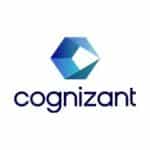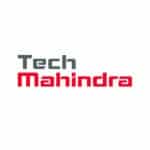World
Class Instructor
1:1 with
Industry Expert
400+
Global Hiring
55%
Avg. Salary Hike
- Overview
- Course Details
- Syllabus
- FAQ
Acquire Key Python Skills: Master Data Science, Earn Certification, Launch Your Dev Career!
Elysium Academy has carved out its niche as a forerunner in the Data Science domain, providing an all-encompassing product that ensures participants harness, interpret and utilize data in ways never before imagined. Elysium Academy has carved out its niche as a forerunner in the Data Science domain, providing an all-encompassing product that ensures participants harness, interpret and utilize data in ways never before imagined.
Version
Duration
Theory
Practical
Version
2.2
Duration
65 Hours
Theory
12 Hours
Practical
65 Hours
- Industry Based Projects
- Personalized coordinator.
- Trainer feedback.
- Trainer availability post sessions.
- Get your staff certified.
- Certificate from governing bodies.
- Recognized worldwide
- Hands on assignment
- Master Python fundamentals, including variables, data types, loops, and functions.
- Dive into advanced concepts such as object-oriented programming (OOP) and error handling.
- Harness powerful libraries like NumPy and Pandas for data manipulation and analysis.
- Visualize data effectively using Matplotlib and Seaborn.
- Implement machine learning algorithms with Scikit-learn.
- Explore deep learning techniques with TensorFlow.
Top companies offer this course to their employees
Course was selected for our collection of top-rated courses trusted by businesses worldwide.





Salary
PER ANNUM
$112,921
Job Growth
Current Month
23%
Offer Jobs
2026
15,508
- Data Science is the mining infrastructure set-up that makes the data.
- Data Science is the comprehensive study of data collected by various organizations.
- Scrubbing Data is where the data will be cleansed, and all the duplicate
- Data Scientists understand that data and derive meaningful outcomes.
- Data Science is the substructure on which Artificial Intelligence are built.

Our Training Program Benefits
- Live, interactive training by experts.
- Curriculum that focuses on the learner.
- Challenge-based, hands-on project.
- Opportunities for team building.
- Cost- saving training.
- Convenient for your employees.
- Completely tailor-made curriculum.
Chapter-1 Getting Started
- History and Features of Python
- Basic Syntax
- Variables and Data Types
- Operators
- Conditional, Loop & Control Statements
- Functions
- Random Modules
- Data Science
- Data Science vs. Data Scientist
- Future scope of data scientist
- How to link python with DS
- Data Mining
- Data Sets
- Python packages
- Data Collections
- Data Preprocessing
- Data Visualization
- Data Modelling
- Pandas
- Numpy
- Scipy
- Sckit
- NLTK
- Pandas
- Numpy
- Scipy
- Sckit-Learn
- NLTK
- Matplot
- Keras
- Tensorflow
- PyTorch
Chapter-2 Data Collection and Preprocess
- Numpy
- Create Numpy arrays
- Numpy operations
- Numpy for statistical operations
- Handling Missing/Fill-na/Replace Values
- Drop Column/row
- Label Encoding
- One-Hot Encoding
- Reshaping
- Data operations
- Data frame creations
- Statistical functions in data operations
- Merging and joining data frame
- Concatenate
- What is Data Normalization?
- Standard Scalar
- Min-Max Scalar
- Hands on standard scalar
- Hands on min-max scalar
- How to collect input data
- Read CSV Data
- Read JSON Data
- Read XLS Data
- Read HTML Contents
- View Data
Chapter-3 Visualizations
- Plotting with matplotlib
- Bar charts
- Pie charts
- Scatter plots
- Box plots
- Histogram
- Bubble Chart
- Heat maps
- Graph/line graph
- Geographical data
- Plotting with seaborn
- Histogram with grid
- Distplot
- Pairplot
- Scatter plots
- Box plots
- Lmplots
- Histogram
- Challenge: Visualize titanic dataset
- Feature Extraction
- Feature Selection
- EDA
- Pairplot
- Scatter plots
- Box plots
- Lmplots
- Histogram
- Challenge: Visualize titanic dataset
Chapter-4 Machine Learning
- Al vs ML vs DL
- Application of machine learning
- How do machine learns
- Types of Machine learning
- Supervised Learning
- Un-supervised Learning
- What is Native Bayes?
- Types of Naive Bayes
- IRIS Classification
- Data Processing
- Train and create model
- Performance Estimation
- Analyse and create confusion matrix
- Ordinary Least Square and Regression Errors
- Data Processing
- Train and Test Model
- Test the model and Predict Y Values
- R-Squared and its Importance
- Score and Get coefficients
- Calculate RMSE (Root Mean Squared Error)
- Plot the predictions
- Ordinary Least Square and Regression Errors
- Data Processing
- Train and Test Model
- Test the model and Predict Y Values
- R-Squared and its Importance
- Score and Get coefficients
- Calculate RMSE (Root Mean Squared Error)
- Plot the predictions
- Ordinary Least Square and Regression Errors
- Data Processing
- Train and Test Model
- Test the model and Predict Y Values
- R-Squared and its Importance
- Score and Get coefficients
- Calculate RMSE (Root Mean Squared Error)
- Plot the predictions
- What is SVM?
- SVM kernel types
- Problem: IRIS Classification
- Data Processing
- Train and create model
- Performance Estimation
- Analyse and create confusion matrix
Chapter-5 Algorithms
- What is Logistic Regression?
- Problem: Heart Disease Prediction
- Build Model
- Performance Estimation
- Analyse and create confusion matrix
- What is decision tree?
- Decision Tree Parameters
- Problem: IRIS Classification
- Data Processing
- Train and create model
- Evaluate Model
- What is random forest?
- Ensemble Learning
- Bagging and Boosting Classifiers
- Problem: Cardio Vascular Disease
- lmplementation
- Evaluate Model
- Class
- Objects
- Constructors
- Constructors
- Encapsulation
- Inheritance
- Polymorphism
- Super and this Keyword
- Abstraction
- Inheritance
- What is KNN?
- KNN parameters
- Problem: Cardio Vascular Disease
- Data collection and preprocessing
- lmplementation
- Evaluate Model
Chapter-6 Evaluation Metrics
- Evaluate Accuracy
- Classification metrics
- What is Threshold and PHAPTER Adjusting Thresholds
- AUC ROC Curve
- Why to reduce dimensions and Importance of PCA?
- Steps to calculate PCA
- Implementation of PCA
- Visualization
- What is Ridge regression?
- Implement Ridge Regression
- Plot Ridge Regression Line
- Lasso Regression or L1 Penalty
- lmplement lasso Regression
- Plot lasso Regression Line
- What is over fitting?
- How to avoid over fitting?
- What is under fitting?
- How to avoid under fitting?
- What is Cross Validation?
- How Cross Validation Works
- Prepare for Cross Validation
- Parameter and implementation of Cross Validation
- Understand the results of Cross Validation)
- Hands On - Analyse the Result
Chapter-7 Hypertunning Model and Clustering
- What is Hyper parameter Tuning?
- Grid Search and Randomized Search Approach
- GridSearchCV Parameters Explained
- Create GirdSearchCV Object
- Fit data to GridSearchCV
- Understand GridSearchCV Results
- GridSearchCV using Logistic Regression
- GridSearchCV using Support Vector
- Randomized Search using random forest
- Select Best Model
- Randomized Search
- Model Selection Summary
- What is Clustering?
- How the clusters are formed?
- Problem Understanding: Customer Segmentation
- Get, Visualize and Normalize the data
- Import KMeans and Understand Parameters
- Understanding KMeans++ Initialization Method
- Create Clusters
- Visualize and create different number of clusters
- Understand Elbow Method to Decide number of Cluster
- Implement Elbow Method
Chapter-8 NLP and Recommendation System
- What is NLP
- Application of NLP
- Remove punctuation
- Tokenize
- Remove stop words
- Stem words
- Lemmatize
- Padding
- Part of Speech Tagging
- Name Entity Relationship
- Sentiment Analysis
- Read and preprocess data
- NLP techniques
- Tokenization
- Tokens to vectors
- Naive Bayes
- Logistic Regression
- Sentiment Analysis
- Evaluate Metrics
- What is Recommendation System?
- How Do Recommendation Works?
- Types of Recommendation
- What is Content based recommendation?
- Advantages and drawbacks
- Hands on Content based recommendation code
- What is Collaborative filtering?
- Advantages and drawbacks
- Kinds of collaborative filtering
- Hands on collaborative filtering code
- What is hybrid recommendation?
- Advantages and Drawbacks
Chapter-8 NLP and Recommendation System
- What is NLP
- Application of NLP
- Remove punctuation
- Tokenize
- Remove stop words
- Stem words
- Lemmatize
- Padding
- Part of Speech Tagging
- Name Entity Relationship
- Sentiment Analysis
- Read and preprocess data
- NLP techniques
- Tokenization
- Tokens to vectors
- Naive Bayes
- Logistic Regression
- Sentiment Analysis
- Evaluate Metrics
- What is Recommendation System?
- How Do Recommendation Works?
- Types of Recommendation
- What is Content based recommendation?
- Advantages and drawbacks
- Hands on Content based recommendation code
- What is Collaborative filtering?
- Advantages and drawbacks
- Kinds of collaborative filtering
- Hands on collaborative filtering code
- What is hybrid recommendation?
- Advantages and Drawbacks
Chapter-9 Deep Learning
- What is Neuron and Artificial Neural Network?
- How Artificial Neural Network works?
- What is Keras and Tensorflow?
- What is a Tensor in Tensorflow?
- Installing Keras, backend and Tensorflow
- Keras Model Building and Steps
- Layers - Overview and Parameters
- Activation Functions
- Layers - Softmax Activation Function
- What is a Loss Function?
- Cross Entropy Loss Functions
- Optimization - What is it?
- Optimization - Gradient Descent
- Initializers - Vanishing and Exploding Gradient Problem
- Layers - Initializers explained
- Problem Understanding: Disease Prediction
- Read and process the data
- Define the Keras Neural Network Model
- Compile the Keras Neural Network Model
- Evaluate the result
Chapter-10 Projects
- Problem understanding: Loan Approval Prediction
-  Read and preprocess data
- Data splitting
- Classification - Naïve Bayes
- Classification – Support Vector Machine
- Classification - Random Forest
- Classification - Logistic Regression
- Train the model
- Evaluate performance metrics
- Problem Understanding : Zomato Restaurant Review
- Read and preprocess data
- NLP
- Data Splitting
- Classification - Naïve Bayes (Multinomial)
- Classification - Support Vector Machine
- Classification - Random Forest
- Classification – Decision Tree
- Classification - Logistic Regression
- Train the model
- Evaluate performance metrics
- Visualization using matplotlib and seaborn
- Problem Understanding : Product Recommendation
- Read and preprocess data
- Collaborative filtering
- Content based filtering
- Recommend the product
- Evaluate metrics
what is elysium academys python course for data science?
Elysium Academy's Python course for data science is a comprehensive program designed to teach the fundamentals of Python programming and its application in data science.
What are the prerequisites for enrolling in the Python course for data science?
There are no specific prerequisites for enrolling in the Python course for data science. However, a basic understanding of programming concepts and mathematics would be beneficial.
Are there any practical projects or assignments included in the Python course for data science?
Yes, upon successful completion of the course, you will receive a certificate from Elysium Academy, which can be a valuable addition to your resume.
Will I receive a certificate upon completion of the Python course for data science?
Yes, upon successful completion of the course, you will receive a certificate from Elysium Academy, which can be a valuable addition to your resume.
How can I enroll in the Python course for data science at Elysium Academy?
You can enroll in the course by visiting Elysium Academy's website and following the enrollment process outlined for the Python course for data science.
How can I get started with machine learning in Python at Elysium Academy?
To get started with machine learning in Python, you can:
- Learn the basics of machine learning algorithms and concepts.
- Explore the Scikit-learn library and its documentation.
- Work on hands-on projects and tutorials to apply machine learning techniques to real-world datasets.
Where can I find support and guidance for Python and data science projects at Elysium Academy?
At Elysium Academy, you can reach out to instructors, mentors, or fellow learners for support and guidance. Additionally, online forums, community groups, and social media platforms can be valuable resources for getting help, sharing ideas, and collaborating on projects.
What is Python, and why is it crucial for data science at Elysium Academy?
Python is a versatile, high-level programming language known for its simplicity and readability. It's crucial for data science at Elysium Academy because it offers a rich ecosystem of libraries and tools specifically designed for data analysis, visualization, and machine learning.
What resources are available for learning Python for data science at Elysium Academy?
Elysium Academy offers various resources for learning Python for data science, including:
- Instructor-led training courses with experienced faculty.
- Self-paced online courses and tutorials.
- Practical workshops and projects.
- Access to educational materials, books, and online platforms like Coursera, Udemy, and DataCamp.

- Python For Data Science Crash
- Duration: 45 Hours
- Level: Beginner
- Days: 45 Days
- Chapters: 11
- Language: English
- Certifications: Yes
- Code: EAPL/SOLA/SLAD3
- Course Code: EACJC
- Sub Category: App Development





















